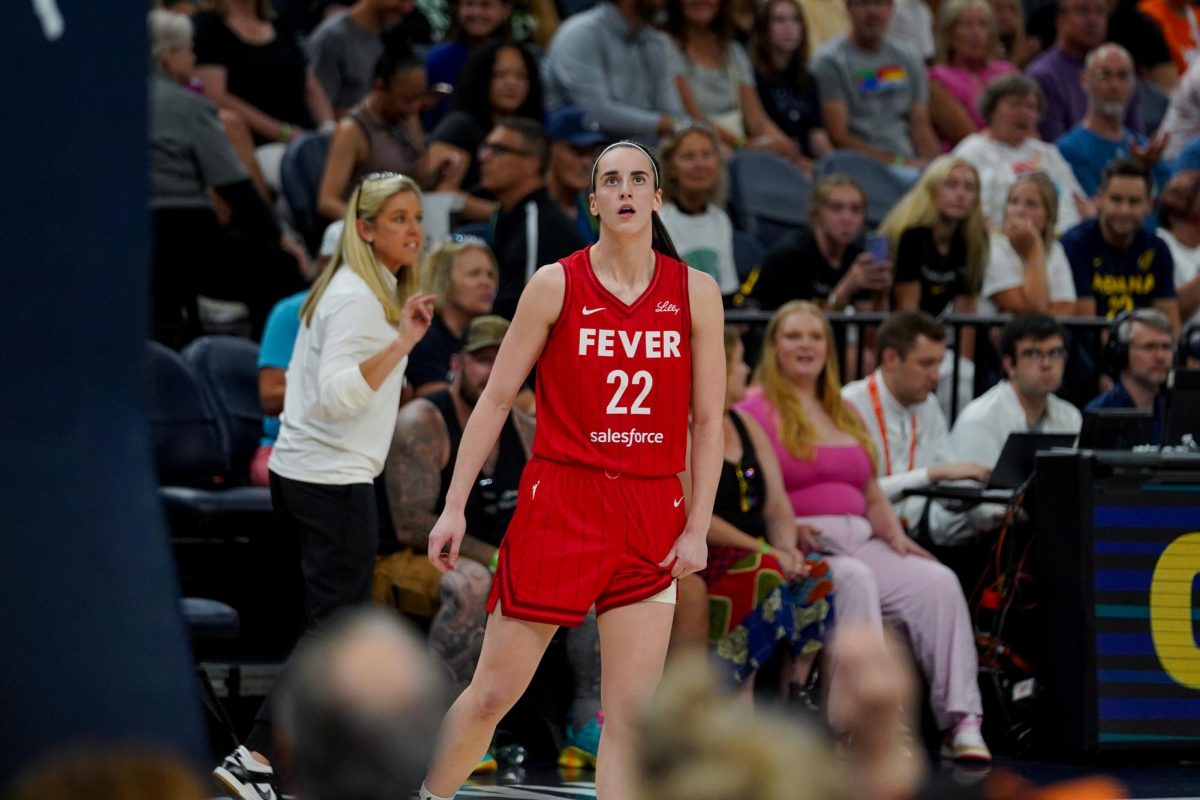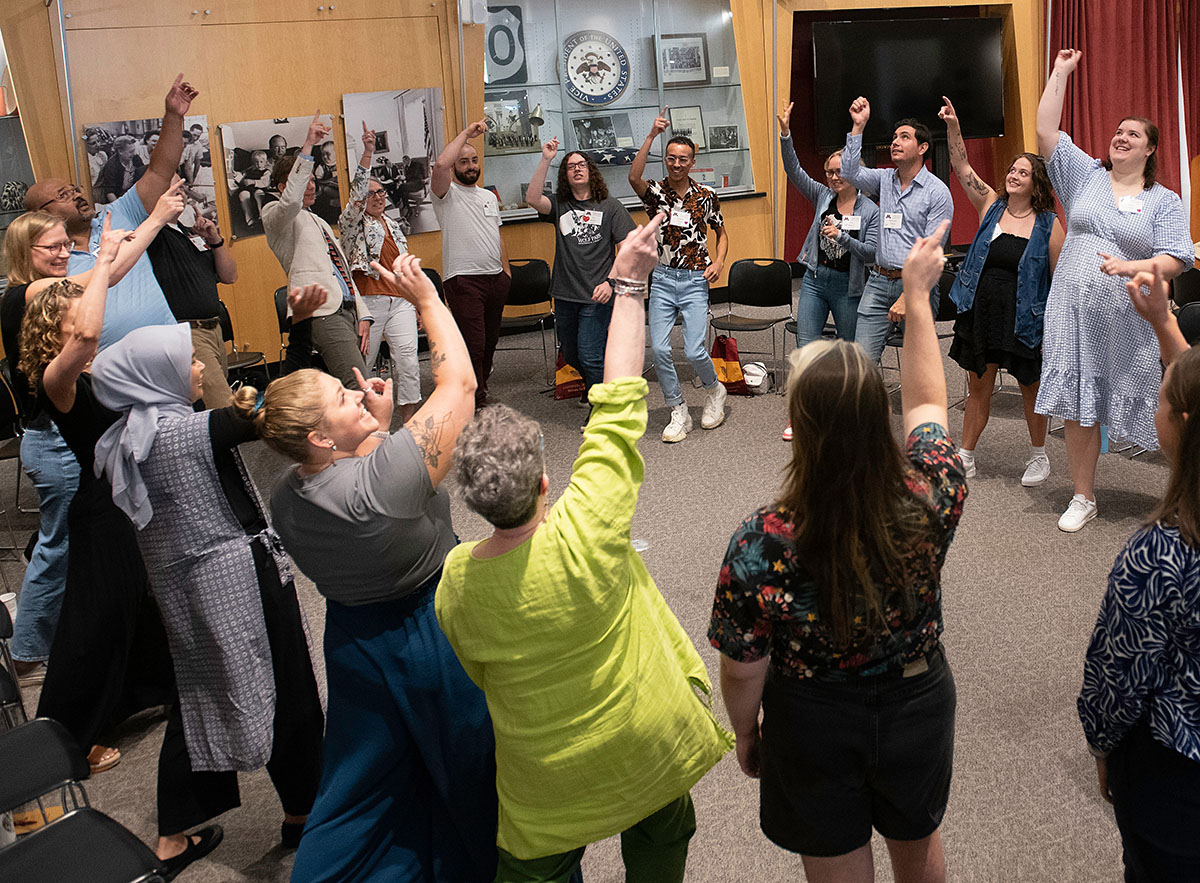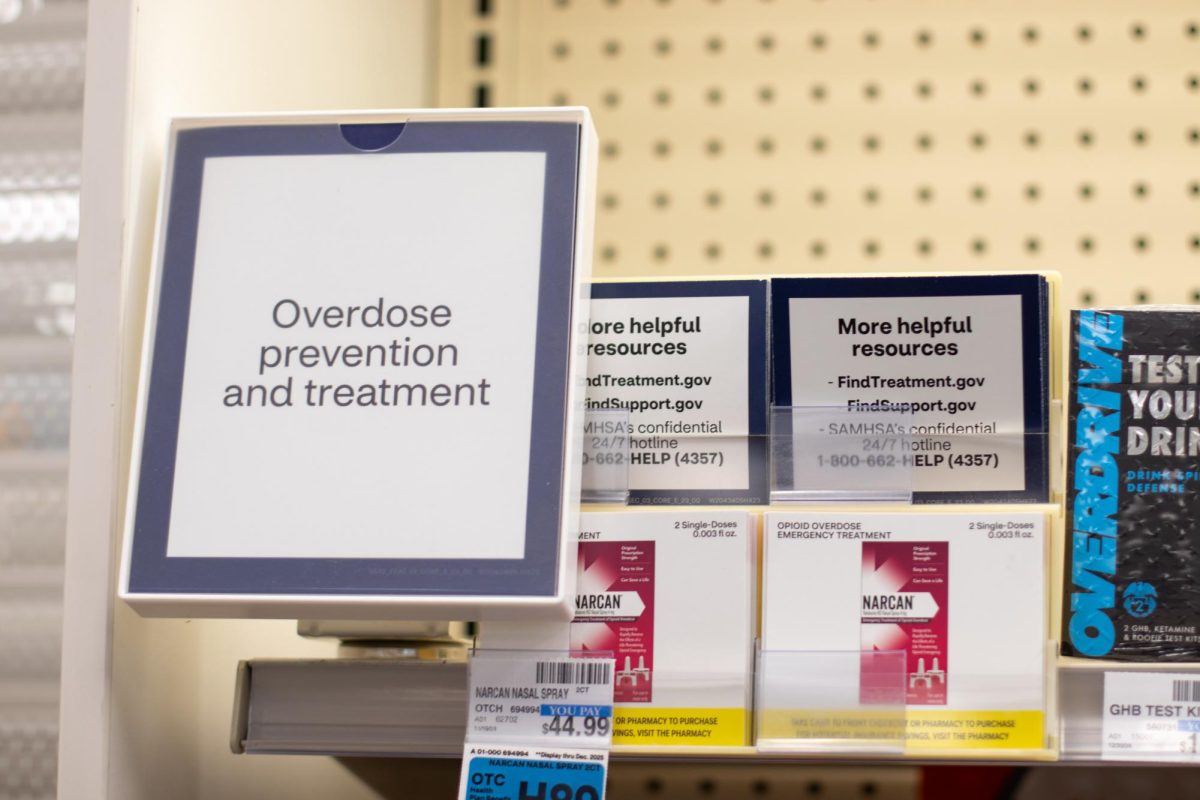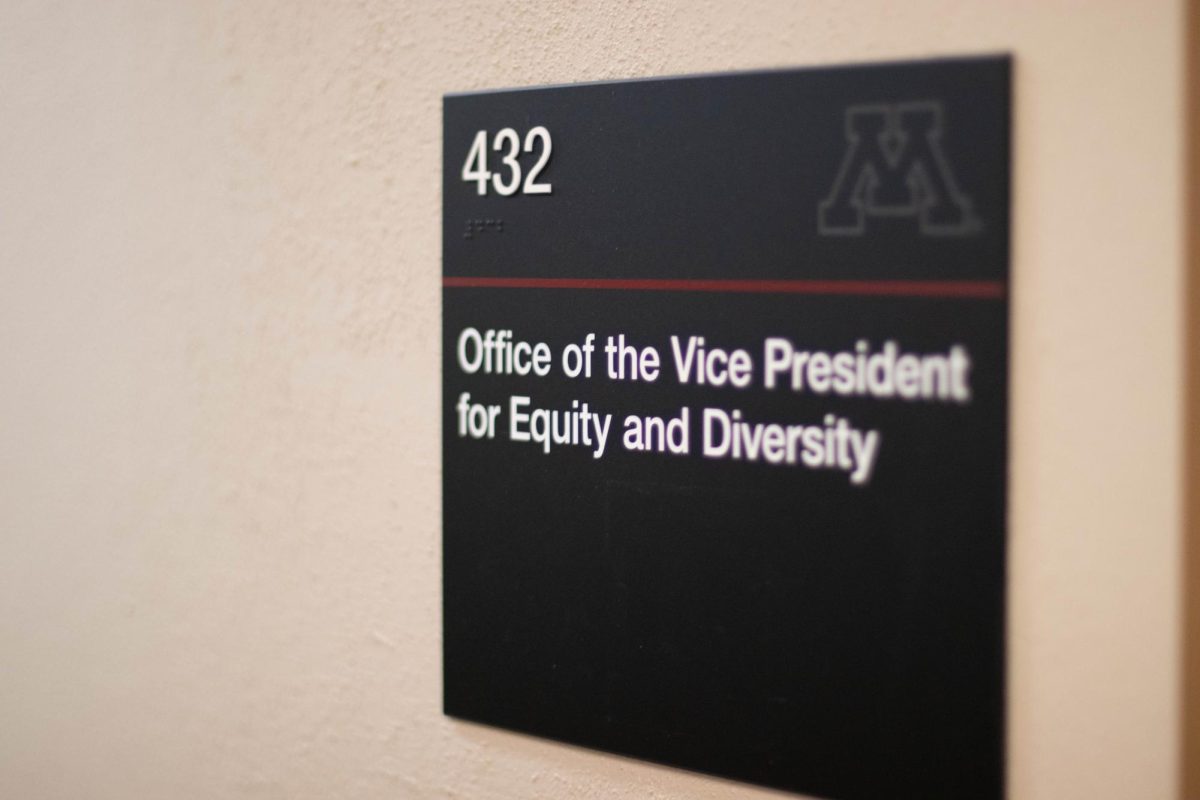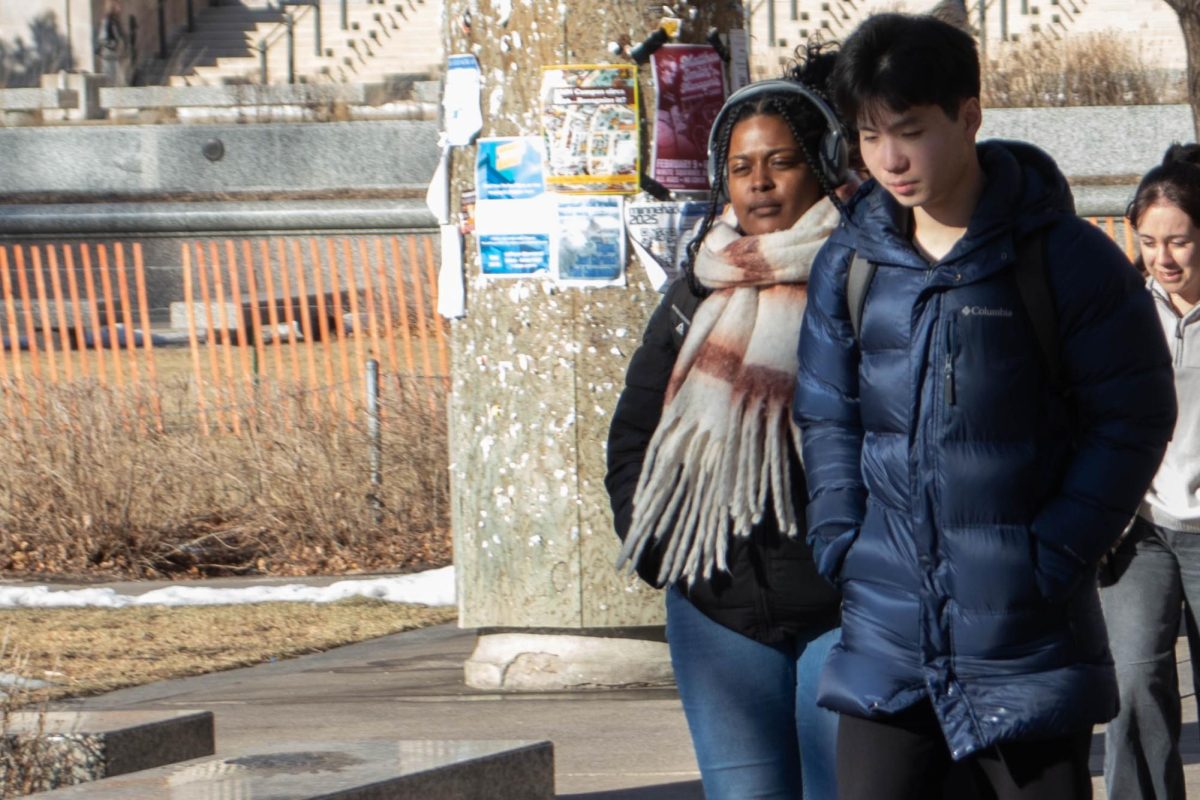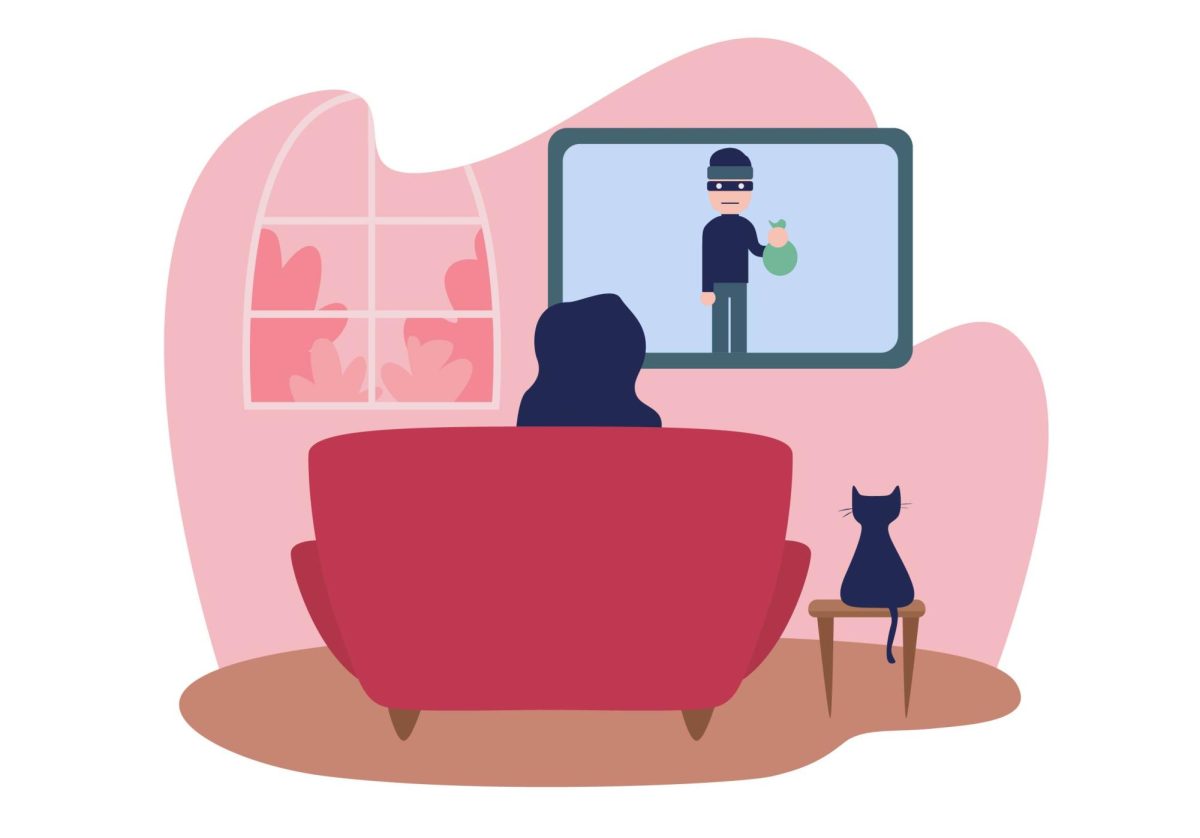A line wrapped around the corner of the street as people waited to get into a Minneapolis sports bar on a Friday night.
It was game day. But the game wasn’t the Super Bowl or an NBA Final. It was the women’s division one NCAA basketball Final Four.
Even if those men’s sporting events had been on the schedule, they would not have appeared on screen at this sports bar. It exclusively plays women’s sports.
When Jillian Hiscock opened A Bar of Their Own in Minneapolis in March, she expected people to come in for big games, but did not expect the number of people who came in regularly when there was nothing in particular to watch.
A Bar of Their Own had already been packed for a week when the University of Iowa vs. LSU women’s basketball Elite Eight matchup to qualify for the Final Four resulted in a line out the door at 4:30 p.m. on April 1, a Wednesday.
“We were full before we technically even opened,” Hiscock said.
Organizations and businesses focused on empowerment and awareness like Unbreakable Female Athlete, founded by Iowa rower Jaecee Hall, and A Bar of Their Own, provide a stabilizing base from which the attention drawn to women’s collegiate sports can grow. The women who created these organizations are working to ensure the growth of women’s sports when the University of Iowa’s Caitlin Clark, the all-time NCAA Division I scoring record holder who became a phenom and massive draw to men and women alike, moves on to the WNBA next season.
Unbreakable Female Athlete is a brand created to support female athletes at all levels and uses funds and collaborations to give opportunities to female athletes globally.
Hall initially just wanted a shirt that symbolized her pride toward being a female athlete, and, after brainstorming with roommates, she landed on the word “unbreakable.” She put her idea on a shirt, and when she wore it to practice, everyone started asking for their own.
“People were asking for shirts and I was like, OK, there’s clearly a space for this,” Hall said.
Whether it be providing quality sports bras to young athletes so they can keep playing or creating a fund to support female coaches, UFA is trying to build on the momentum from women’s basketball in all areas of women’s sports.
The Recent Growth of Women’s Sports
Women’s sports experienced tremendous growth from 2018 to 2023, according to a study by The Collective, a women-focused platform within Wasserman, a sports marketing and talent agency. An increase in sponsorship investment, attendance, valuations and creation of new leagues all contributed to the growth.
The Professional Women’s Hockey League held its inaugural game on Jan. 1, 2024. A world attendance record was set for women’s hockey at the Xcel Energy Center at Minnesota’s home opener PWHL game against Montreal with 13,316 fans in attendance, according to FOX9.
The International Olympic Committee predicted for the first time in history the Olympics will have an equal number of male and female athletes this summer.
Sold-out crowds followed Clark and the Iowa Hawkeyes women’s basketball team this season, including at the University of Minnesota in February.
Every time Clark shot a three-pointer from the logo in Williams Arena on Feb. 28, the crowd collectively gasped and erupted when it went in. Students cheering for Minnesota had to hold themselves back from applauding the opposing team’s star player.
The Iowa vs. LSU Elite Eight matchup, a rematch of the 2023 national championship, averaged 12.3 million viewers on ESPN, making it the most watched men’s or women’s college basketball game ever on the network, reported ESPN.
To finish the historic season, the women’s March Madness title game, Iowa vs. South Carolina, averaged 18.7 million viewers, according to the NCAA. This was the first time the women’s title game drew more viewers than the men’s.
Part of the reason women’s basketball became so popular is because universities and media were covering and capitalizing on the opportunity, Hall said.
But there are other women’s sports at these universities Hall doesn’t think receive adequate media coverage or promotion from their programs.
“It makes me wonder what the world would look like if universities, schools, whatever it may be, teams, took pride in all of their sports,” Hall said.
Media Coverage for Women’s Sports
Over 50 years ago, the statute commonly known as Title IX was passed into law. The law was meant to protect from discrimination based on sex.
But the law doesn’t regulate what sports programs can post on social media, because a social media post doesn’t cost anything. Universities can legally overlook nonrevenue-generating sports, essentially sports that aren’t men’s football, basketball or baseball.
An analysis by ESPN looked at posts on Twitter by athletics departments in the five major college sports conferences. The analysis found 84% of the athletic department’s accounts mentioned men’s teams more often than women’s.
Hall combatted this by diversifying her UFA Instagram account and posting sports that don’t typically get as much coverage as others, such as women’s swimming and golf.
“If they’re not going to do it, then obviously we have to take it into our own hands,” Hall said.
Hiscock was thinking the same thing at A Bar of Their Own.
On days when there weren’t popular games drawing crowds, she tried to play sports that people wouldn’t typically see. On a Friday morning just after opening, the TVs on the walls were playing coverage of women’s surfing.
According to Hiscock, when a regular from Tracy’s Saloon, the restaurant that formerly occupied A Bar of Their Own’s space, first came into A Bar of Their Own, he said he’d never taken much interest in women’s sports. Now, he’ll come in, sit at the bar, watch what’s on the screens and ask questions about the sports being shown.
The goal is to get women’s sports regularly on screens at all sports bars, Hiscock said. It wouldn’t hurt to change one TV to a softball game instead of 17 TVs on football replays when no big games are happening.
“The goal for me is always, always, always more exposure for women athletes,” Hiscock said. “I think that has to have involvement from men’s sports bars as well as additional women’s sports bars.”
How Women’s Sports Can Be Promoted
University of Minnesota senior Kaden Stubstad said he started watching women’s college basketball because of the extensive coverage it received in the media.
In the past, Stubstad completed brackets but didn’t pay much attention to the women’s March Madness tournament. This year he watched every game Clark played in the tournament.
Stubstad attributed his interest in women’s basketball to the social media posts of Clark. He said the tournament was going around so much that even people who don’t usually watch women’s sports and see them in their social media feeds, like himself, started to catch on and be interested.
“Our campus as a whole doesn’t necessarily do that enough for women’s sports in general,” Stubstad said. “I feel like football and hockey just kind of dominate our social media scene.”
Aspen Galdamez, an employee at Chik-fil-A, said Clark visited the restaurant when Iowa was in Minneapolis to play against Minnesota.
Galdamez knew who Clark was because of the mass media coverage that follows any great athlete, man or woman. He said when Ronda Rousey was big, she drew viewers to women’s UFC. He likened the attention to the box office flooding when a movie receives extensive promotion and creates entertaining previews that draw conversations and crowds.
When athletes are promoted in the media, people will think that person is interesting and want to watch them, Galdamez said. To draw attention to women’s sports, colleges and teams should market their athletes the way they marketed Clark.
“What can you do to make that name big and what are they doing so they’re well known?” Galdamez said.
University Support for Women’s Sports
The University of Minnesota established its first women’s intercollegiate sports program in 1971. To get to 1971 in the Gopher Athletics Timeline, the user must scroll through six pages and 120 years of men’s sports.
University of Minnesota student-athlete development director Jennifer Callinan works closely with the Women Invested in Leadership and Learning program. WILL was created to give female athletes at the University of Minnesota resources to boost their careers while in sports so they have the tools for success when they finish their sport. The program brings in mentors and partners with the 12 women’s sports at the University of Minnesota.
Callinan said part of WILL’s mission is to level the playing field for female athletes, who are trying to catch up to the opportunities male players have had for much longer.
In 2021, the NCAA allowed athletes to start profiting from their name, image and likeness, according to ESPN. These NIL deals allowed female athletes to make money from their social media, and they took advantage of the opportunity.
Women only had 43% of NIL deals according to a report by SponsorUnited using data from February 2023 to February 2024. But female athletes led the way in total number of deals. Alex Glover of SMU volleyball had 41 deals, and the highest a male athlete had was Chase Griffin of UCLA football with 26 deals.
Female athletes also had the highest follower growth among athletes with NIL deals, posted more consistently and utilized Instagram stories and reels better, according to SponsorUnited’s study.
The success of female athletes in using social media, securing deals for influencer codes, and growing their following has not gone unnoticed, according to Hall. But the universities need to do their part as well.
There’s a surplus of students studying marketing and media at these schools eager to gain experience by producing content for athletics, Hall said. Athletics personnel seem to assign the majority to the football team when they could send the students to market the sports that typically get less attention at no cost.
According to University of Minnesota NCAA online reports, the university spends more on gender-specific fundraising, marketing and promotion for men’s teams. In 2023 the costs totaled $477,118 for the men’s teams and $74,105 for the women’s teams. These are the input costs associated with media guides, brochures, recruiting publications and other similar materials. Despite the university sponsoring 13 women’s teams and 10 men’s teams, the men used over $400,000 more.
The foundation is building from the top down, with women’s basketball shattering records, according to Hall. But it’s not enough to see Clark and Angel Reese, a popular LSU basketball player, and hope to be like them one day if there are still barriers in the way.
“The funding has been there for years for men and for boys,” Hall said. “But that whole framework hasn’t been there for girls. I think it’s starting to be there.”


